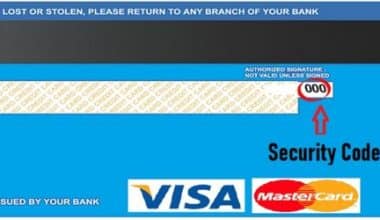Wire transfers are electronic payments that transfer money from one bank account to another. To create one, you must first understand what information is necessary, how much it costs, and how it operates.
Continue reading to find out what you need to know before conducting a wire money transfer, where the service is accessible, and alternative means of sending money, whether small or large, that may work better for you and your situation.
What Is a Wire Transfer?
A wire transfer is an electronic transfer of money through a network managed by banks and transfer service firms all over the world. Wire transfers require information from the party making the transfer, such as the receiver’s name and account number, and include a sending and receiving institution.
Wire transfers do not involve the physical exchange of currency and are instead settled electronically. They can be transferred between banks or via a non-bank service like Western Union.
Types of Wire Transfer
Wire transfers are classified as either domestic or international.
#1. Domestic Wire Transfers
A domestic wire transfer is any sort of wire payment made between two banks or institutions in the same nation. Senders may need a code or the recipient’s branch number to complete a transaction.
These transactions are typically executed the same day they are initiated and can be received in a matter of hours. This is due to the fact that a domestic wire transfer simply requires a domestic automated clearing house (ACH) and can be delivered within a day.
#2. International Wire Transfers
International wire transfers start in one country and finish in another. Even when sending money to someone in another country who has an account at the same bank, senders must initiate international transfers. These payments necessitate the use of a route or SWIFT code.
Normally, wire transfers are delivered within two business days. This additional day is necessary because international wires must clear both a domestic ACH and its foreign equivalent.
Domestic wire transfers might cost up to $35 or more for each transaction. International wire transfers are frequently substantially more expensive. Some receiving institutions will also impose a fee, which will be subtracted from the total amount received by the customer.
How To Do Wire Transfer?
Before you begin, double-check all of the specifics of your wire transfer with your bank. Check with your service provider for restrictions, and keep in mind that certain banks may require you to be a customer for a particular period of time before making a wire transfer. You may be required to fill out a form at the bank, or you may be able to begin the procedure online.
To send payments via standard bank wire, you will most likely want the following information, which you can obtain from the recipient:
- Bank name of the recipient (the bank that the money is going to)
- American Bankers Association (ABA) routing number or equivalent code of the recipient bank
- Account number of the payee at the bank
- Any more information you require (such as further delivery instructions)
After you make your request, contact your bank to ensure they have all they require.
Expect to pay a fee for the service, and you may have to pay even if you receive a bank wire into your account. Wire transfers can cost up to $30 for domestic transfers and $45 for international transfers.
If you use a credit card, your card issuer may impose these additional fees since the wire transfer is treated as a cash advance.
Note
Never wire money based on information from an email. If someone offers you instructions through email, phone the recipient and confirm the wire instructions before proceeding. This is especially critical if you will be wiring big amounts of money. If your title firm sends you wire instructions for a down payment, for example, double-check the routing information.
What are the Dangers of Wire Transfers?
Wire transfers are generally safe and secure, as long as you know who is receiving them. Each person involved in a wire transfer transaction should be forced to establish their identity if you use a legal wire transfer service, making anonymous transfers impossible.
The Office of Foreign Assets Control, a Treasury Department official, monitors international wire transfers that originate in the United States. The agency ensures that money sent abroad is not used to fund terrorist operations or for money laundering. They are also entrusted for preventing money from flowing to countries sanctioned by the United States government.
If the agency suspects any of these scenarios, the sending bank has the authority to freeze the cash and prevent the wire transfer from proceeding.
Wire transfers may be flagged for a variety of reasons, alerting officials to probable misconduct on the part of either the recipient or the sender in the following cases:
- Transfers to safe-haven nations
- Account transfers to non-account holders
- Transfers on a regular basis for no discernible cause
- Incoming and outgoing wires of the same monetary value
- Cash firms wire large sums
How Do You Receive Money By Wire Transfer?
To receive money by wire, you must supply the person or business sending money with your bank account information. To ensure that you utilize the correct numbers, ask your bank for incoming wire instructions.
It’s worth noting that the ABA number you’re used to seeing on checks or using for direct deposit may not work for foreign transfers because international wires may require a Swift Code.
To minimize confusion, contact customer service and confirm that you’re following the proper set of numbers and instructions.
Pros and Cons of Wire Transfers
Pros
- The rapid resolution, even across boundaries.
- Insufficient funds cannot be bounced or kept.
Cons
- Wire transfers are difficult for some sums due to bank fees.
- Banks may set a maximum transfer amount.
- Alternative payment methods may be faster and less expensive than wire transfers.
Alternatives to Wire Transfers
Prior to the introduction of computer networks, the only option for wire transfers was to send a physical check or money order via mail. This had apparent drawbacks because letters may occasionally become lost or delayed in transit. While credit and debit card payments can be made over the phone, this approach is prone to credit card theft.
If the funds are not required immediately, they can be sent via the Automatic Clearinghouse, or ACH, an electronic network operated by the National Automatic Clearinghouse Association. ACH transfers are commonly used for bill payments, payroll, or tax refunds because they are often batch-processed, but they can also be utilized for one-time transactions.
Following the broad adoption of the Internet, advances in financial technology gave rise to new methods of sending money. Peer-to-peer banking systems such as Venmo, Zelle, Square, and PayPal offer a quick and easy way to send money with low or no fees. Furthermore, they do not demand any banking information regarding the beneficiary.
What Data Is Required for a Wire Transfer?
Bank and wire transfer services may necessitate the following:
- appropriate government-issued photo ID or driver’s license of the sender
- Full name and contact details of the sender
- The bank account and transit number of the sender
- Full name and contact information for the recipient
- The bank account and transit number of the beneficiary
- The ABA routing number of the recipient
Keep in mind that funds are usually irreversible, so double-check facts like the recipient’s bank account number and contact information before conducting a wire transfer. If you discover an issue, call your bank or wire transfer service right once to see if they may still assist you in making a correction or canceling the transaction. After a transfer is completed, the money is normally accessible for immediate use or withdrawal by the recipient. Because scammers frequently use wire transfer scams to target victims, it’s critical to avoid providing personal information and bank account information to unknown people or businesses.
How Long Does It Take To Send a Wire Transfer?
Domestic wire transfers are typically processed within 24 hours, however international wire transfers can take 1-5 business days. Wire transfer timings may also vary due to specific cut-off times, federal laws, weekends, and bank holidays.
Because wire transfers do not necessitate bank account holds, they can be processed rapidly, however, this depends on the processing and cut-off times. Banks, credit unions, and wire transfer services have cut-off times, so be sure to confirm this information when executing a time-sensitive or urgent transfer. If you are concerned about any delays (as a sender or recipient), you can contact the bank or transfer service to see if they can trace the wire and provide any updates on processing time.
How Can You Recover Money From a Wire Transfer?
There is no guarantee that you will be able to recover your money after initiating a wire transfer. If you notify your bank or credit union before the receiving institution has accepted the transfer, you have the best chance. Explain the situation to your bank, especially if it was a fraudulent transaction. If you have been defrauded, you should also notify your local police, your state’s consumer protection office, and the FTC.
What are Other Money Transfer Alternatives
A wire transfer is sometimes your only option. However, there are other ways to transfer or receive money.
#1. Money Transfer services
Western Union and MoneyGram money transfers are commonly referred to as “wires,” and some of these transfers are almost quick. In a matter of minutes, the giver can go into a retail store with cash and the recipient can walk out of another outlet with money. If you finance it from your bank account, the transfer will take at least a few days. You will be charged additional fees if you use your credit card to transfer money.
#2. Money Orders and Cashier’s Checks
If you need funds urgently, cashier’s checks are as secure as bank wires and less expensive than wire transfers. When the check is printed, the bank or credit union deducts the funds from the customer’s account.
Money orders are comparable to cashier’s checks in that they are inexpensive but not as secure. They are available for purchase from banks, credit unions, convenience stores, and post offices. They’re not suited for large transactions because the maximum limitations differ by the issuer, necessitating the trouble of acquiring multiple money orders.
Other Alternatives
Several internet services and apps allow you to send money by indirectly tapping into your bank account. Electronic transfers are completed for you by Venmo, PayPal, Cash App, and others. Check with those service providers before taking any risks (particularly if you pay someone you don’t know). These various methods of sending money make the procedure simple, but it usually takes a few days and requires trust from all parties involved.
Conclusion
Wire transfers allow money to be sent between banks over an electronic network. Bank wires are a quick and easy way to move significant amounts of money, whether domestic or international. There are fees involved, though, and wires may take some time to clear.
How To Do Wire Transfer FAQs
What is needed for a wire transfer?
You must include the recipient’s name, address, bank account number, and ABA number when sending a domestic bank wire (routing number).
How much does a wire transfer cost?
Wire transfer fees often range from zero to fifty dollars. Domestic wire transfer fees often vary from $0 to $35, while international wire transfer fees typically range from $35 to $50.
What are the risks of wiring money?
Wire transfers are secure, but scammers frequently use them to conduct fraud, so proceed with caution. A wire transfer is quick and instantaneous, and con artists frequently take advantage of its speed and irreversibility.
Related Articles
- HOW TO WIRE MONEY: Procedures for Wire Transfer
- HOW TO WIRE TRANSFER MONEY: Procedures For Wire Transfer
- Certified Funds: Overview, How they Work, Examples, Real Estate Benefits
- FREE BUSINESS CHECKING ACCOUNT: Best 15+2022 option & how –to-open guide
- SMALL BUSINESS ACCOUNT: How to Open an Account Stress-Free!!! (+Free Tips)






